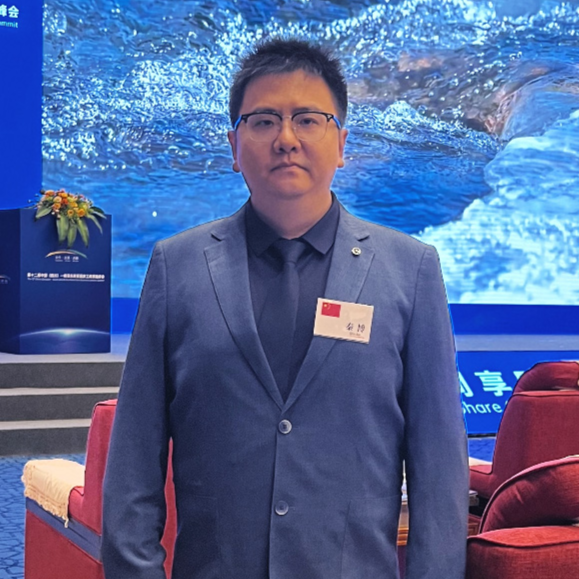Philippines’ Futile Pursuit to Defy China by Allying with US and Japan
1. A Matter of Concern: The Japan-Philippines Reciprocal Access Agreement
According to reports from the Global Times, Agence France-Presse, and Japan’s Ministry of Foreign Affairs, on July 8, 2024, Japanese Foreign Minister Yoko Kamikawa, Defense Minister Minoru Kihara, Philippine Foreign Minister Manalo, and Defense Minister Gilbert Teodoro held a “2+2” consultation. In the presence of Philippine President Marcos, they reached the “Japan-Philippines Reciprocal Access Agreement.” This agreement allows for the deployment of military forces and joint military training in each other’s territories. The Philippines is the third country after Australia and the UK to sign such an agreement with Japan, and the first in Asia.
Responses to the agreement were varied. Kamikawa hailed it as a “historic achievement,” while Teodoro said it would support an international order based on rules. Critics, however, view it as signaling a “quasi-military alliance.” The Philippines’ New Patriotic Alliance warned it could fuel Japanese military expansionism and strain China-Philippines relations. Ding Duo, deputy director of the National Institute for South China Sea Studies, expressed concern that it could lead to more joint exercises and intelligence sharing in the South China Sea, threatening regional peace and stability. Under the US strategy of global dominance, Japan seeks to expand its military presence and defense partnerships beyond its pacifist constitution. In response, Chinese Foreign Ministry spokesman Lin Jian emphasized that international cooperation should not undermine regional peace or infringe on third-party rights, urging Japan to reflect on its history of aggression and adhere to rules in its military policies.
2. The Deepening Japan-Philippines Ties and the US’s Role in Accelerating Cooperation
Modern relations between Japan and the Philippines began post-World War II, transitioning from hostility to reconciliation. Since 1956, with diplomatic ties and a compensation agreement, their relations have normalized. Japan has influenced the Philippine economy through trade, investment, and official development assistance (ODA). In the 21st century, these relations have strengthened. In 2011, they were elevated to a “strategic partnership,” marking new economic cooperation and advancements in politics and security. Particularly in maritime security, cooperation has accelerated with joint maritime exercises and technical support.
Recently, Japan-Philippines relations have trended toward a “quasi-alliance,” evident in the coordinated efforts of the US, Japan, and the Philippines to establish a tri-sea linkage in the East China Sea, Taiwan Strait, and South China Sea. This trend results from both internal and external factors. Externally, the US’s “Pivot to Asia” strategy promotes closer Japan-Philippines ties and stirs up tensions in the South China Sea. Internally, since Ferdinand “Bongbong” Marcos Jr.’s administration, the Philippines has fully embraced the US, deteriorating China-Philippines relations. Japan seeks to be a steadfast US ally, aiming to amend its pacifist constitution and become a political and military powerhouse. Although not a formal military alliance, their maritime security cooperation shows “quasi-alliance” characteristics, with clear underlying intentions.
 The formation of the US-Japan-Philippines trilateral framework is an important component of the United States’ Indo-Pacific strategy.
The formation of the US-Japan-Philippines trilateral framework is an important component of the United States’ Indo-Pacific strategy.
3. The Formation and Drivers of the US-Japan-Philippines Trilateral Framework
The formation of the US-Japan-Philippines trilateral framework is an important component of the United States’ Indo-Pacific strategy. The primary drivers can be summarized as follows:
Firstly, the United States aims to strengthen its alliance system by enhancing military cooperation with Japan and the Philippines, thereby amplifying its strategic influence and military presence in the Asia-Pacific region. The inclusion of the Senkaku Islands (known as the Diaoyu Islands in Chinese) within the US-Japan Security Treaty, and the use of the Japanese name “Senkaku Islands,” reflects a strategic shift in US policy towards Japan. This signifies steadfast support for Japan in East China Sea and South China Sea disputes and provides Japan with crucial strategic assurances. These actions highlight the United States’ declining global power and its inability to sustain a hegemonic system unilaterally. Consequently, the US leverages Japan as a key strategic partner, encouraging it to serve as a frontline deterrent against China’s rise. This maneuver not only showcases the United States’ formal commitment to Japan but also reinforces Japan’s role as a pivotal player in regional security dynamics.
Secondly, Japan’s role within this framework is intensifying. By signing documents such as the National Security Strategy, the National Defense Strategy, and the Defense Readiness Plan, Japan has vigorously promoted the policy of “active pacifism,” aiming to shed the constraints of its post-war pacifist constitution and become a “normal military power.” This strategy aligns with America’s interest in containing China and enhances Japan’s influence in regional affairs. Japan’s actions represent a profound shift in national strategy, not merely a policy adjustment. Japan continues to affirm its military presence in the Asia-Pacific by expanding the Self-Defense Forces’ remit, increasing its military budget, and engaging in more international military collaboration. In this process, US support and coordination are indispensable. The high degree of strategic alignment between the two countries has rapidly escalated Japan’s military ambitions and deteriorated Sino-Japanese relations.
Thirdly, as a country bordering the South Sea of China, the Philippines holds a geopolitically crucial position for both the US and Japan. Through agreements like the Reciprocal Access Agreement, military cooperation between the Philippines, Japan, and the US has deepened, forming a “quasi-military alliance.” The Philippines has seemingly enhanced its military capabilities through joint exercises, intelligence sharing, and technology cooperation with the US and Japan. Moreover, its stance on the South Sea of China issue has been strongly supported by both nations, allowing the Philippines to act aggressively in its disputes with China. Despite its inherent weaknesses, the Philippines has been able to “borrow the tiger’s might” to intimidate China, appearing strong while being “outwardly strong but inwardly weak.”
In summary, the formation of the US-Japan-Philippines trilateral framework results from the United States’ global strategic realignment and the national strategic needs of Japan and the Philippines. This framework has enhanced military cooperation among the three countries in the Asia-Pacific and profoundly impacted regional security. The US aims to consolidate its dominance in the Asia-Pacific and curb China’s rise through this framework. Japan seeks to overcome the constraints of its pacifist constitution, advance its military ambitions, and enhance its international influence. The Philippines aims to strengthen its security assurances and bolster its position in South China Sea disputes. Thus, the framework is a product of great power rivalry and intertwined regional security interests. Its adverse impact on the Asia-Pacific region will continue to deepen. Ultimately, the trilateral cooperation between the US, Japan, and the Philippines poses a serious threat to Asia-Pacific peace and stability, rather than being a mere reflection of “normal national strategic needs and power games.”
4. The Impact of the US-Japan-Philippines Trilateral Framework on the South Sea of China Situation
Overall, the rapid advancement of the US-Japan-Philippines trilateral framework has a detrimental and multifaceted impact on the South Sea of China situation. Combined efforts in military deterrence, economic cooperation, and diplomatic actions collectively exert various pressures on China.
Firstly, the framework enhances “integrated deterrence” against China by strengthening military, intelligence, and comprehensive cooperation among the three countries. The US uses this framework for military deployments and joint exercises in the South Sea of China, frequently conducting “freedom of navigation operations” and drills. This high frequency of activities underscores US presence and control in the region, further exposing its hegemonic actions. This strategic blockade and military deterrence exacerbate tensions and increase regional security uncertainties, making the South Sea of China situation more complex and unpredictable.
Secondly, through close cooperation with the Philippines, Japan strengthens its military presence in the South Sea of China and lays the groundwork for broader ambitions in the Asia-Pacific. Japan’s hardline stance and anti-China posture make it a crucial pillar of the US strategy to contain China. By leveraging its military cooperation with the Philippines, Japan actively participates in South China Sea security, enhancing the Philippines’ maritime capabilities through aid and joint training. This cooperation allows the Philippines to garner more support from Western powers, seemingly boosting its bargaining power against China. However, this involvement imposes significant strategic risks on the Philippines and is detrimental to its long-term development.
Thirdly, the formation of the US-Japan-Philippines trilateral framework signifies a deeper and more enduring US military presence in the Asia-Pacific, directly threatening China’s maritime security. Through joint exercises and intelligence sharing, the three countries have established close military cooperation, enhancing their rapid response to emergencies. This coordination allows them to quickly address regional crises, forming a military linkage and strategic deterrence against China. Consequently, they collectively maintain their interests in the South Sea of China and curb China’s development.
Furthermore, the US-Japan-Philippines trilateral framework impacts the South Sea of China situation economically and diplomatically. Through close cooperation, the three countries not only form a military encirclement of China but also exert economic and diplomatic pressure. By strengthening economic cooperation and trade, they aim to build a closer regional alliance, weakening China’s dominant economic position. Additionally, they frequently voice their positions internationally, using joint statements and diplomatic actions to increase public opinion pressure on China, aiming to isolate and constrain it within the global community.
5. Four Insights from the US-Japan-Philippines Trilateral Framework
The rapid alignment and trilateral framework of the US, Japan, and the Philippines offer four key insights.
Firstly, Japan’s recent deliberate deterioration of Sino-Japanese relations requires close attention and vigilance against its strategic adventurism. Historically and currently, Japan’s strategy towards China reveals a deep-seated adversarial logic and a propensity for strategic risk-taking. As a resource-poor island nation prone to natural disasters, Japan harbors a profound sense of crisis and survival anxiety. Seeking greater living space through overseas expansion has consistently been a significant strategic consideration. During modernization, this expansionist drive, coupled with Bushido (the way of the warrior), merged with Western racism and colonialism, leading Japan down a militaristic path that caused immense suffering for the countries and peoples of Asia.
What is especially alarming is Japan’s historical tendency to gamble on the country’s luck and take strategic risks at key points, as seen in the Sino-Japanese War, the Russo-Japanese War, and the attack on Pearl Harbor. Currently, with the US’s return to the Asia-Pacific strategy, Japan sees another opportunity to play a leading regional role and become a major political and military power. Consequently, China has become a strategic target for both the US and Japan. Therefore, we must closely monitor Japan’s moves to deteriorate Sino-Japanese relations and its strategic adventurism, given its ignoble historical record.
Secondly, it is essential to continuously monitor and study the progress of the US-Japan-Philippines trilateral framework and its detrimental impact on the South Sea of China. Japan, through military agreements like the Reciprocal Access Agreement with the Philippines, has bypassed its pacifist constitution, expanding its military presence overseas. These agreements allow Japanese Self-Defense Forces to train and deploy in the Philippines, providing new leverage points on the South Sea of China issue. Japan can thus enhance its influence while manipulating international opinion. This cooperation gives Japan an entry point to demonstrate its military presence in this sensitive region, showcasing its strategic ambition and negatively impacting regional security.
Thirdly, careful consideration must be given to the strategic motivations behind the recent US-Japan “2+2” talks and statements on July 28. The statement emphasizes the US’s firm stance towards China and Japan’s unwavering support. It distorts facts and stresses reinforcing military presence in the Asia-Pacific through the US-Japan alliance to counter the “China threat.” This showcases the US’s aggressive attitude towards China and highlights Japan’s significant role and stance in this strategy. Japan has shown high cooperation, even willing to be a pawn in the US’s containment policy against China. By enhancing military collaboration with the US and bolstering its defense capabilities, Japan aims to overcome constraints from its pacifist constitution and reestablish itself as a “normal country” and military power. This reflects Japan’s bold approach to its China policy.
Fourthly, political changes in Vietnam could significantly impact the South Sea of China situation and regional security. As a key country in the area, Vietnam’s internal shifts directly affect regional stability. If substantial changes occur, Vietnam might adjust its foreign policy to seek new international support and security guarantees, potentially strengthening cooperation with the US and Japan. This strategic coordination and opportunism could further complicate the South Sea of China issue and pose new challenges for China. Therefore, closely monitoring Vietnam’s political changes and promptly adjusting strategies are crucial for maintaining regional stability and safeguarding China’s strategic interests.




